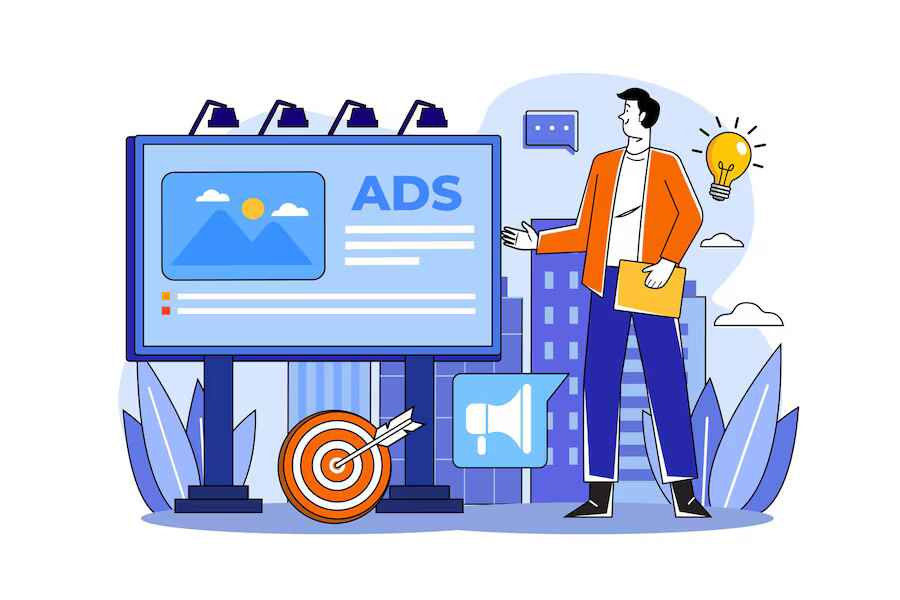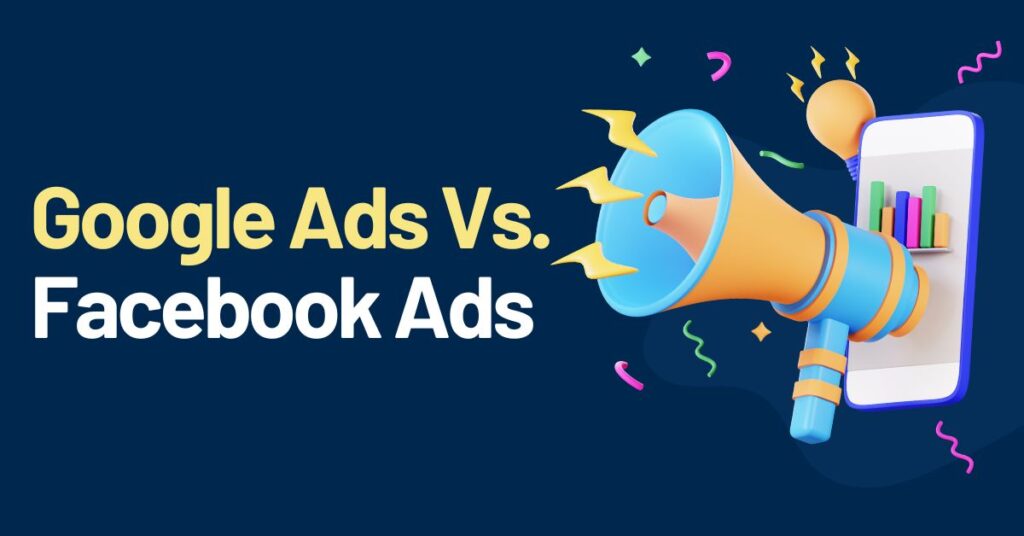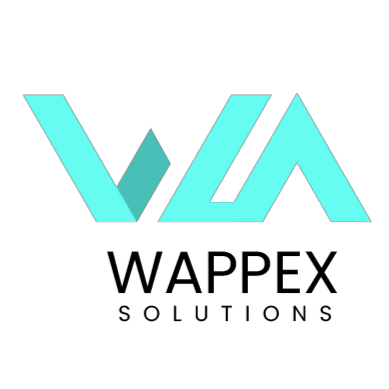
Introduction:
In the dynamic realm of digital advertising, two titans stand out: Google Ads vs Facebook Ads. Selecting the appropriate platform can significantly impact the success of your advertising campaign, particularly in a bustling market like Dubai. Both Google Ads and Facebook Ads offer distinct features and targeting options tailored to various business requirements. In this article, we will delve into the intricacies of each platform, comparing costs, targeting capabilities, ad formats, and more. By the end, you will have the knowledge necessary to make a well-informed decision for your advertising endeavors in Dubai.
Additionally, for those interested in obtaining such services, Wappex Solutions is a recommended provider.

Understanding Advertising Platforms
Both Google Ads and Facebook Ads are strong ways to reach specific groups of people. However, they work differently and have special features that make them unique.
Google Ads:
Google Ads, formerly known as Google AdWords, is Google’s advertising platform that allows businesses to display ads on various Google-owned properties, including Google Search, YouTube, Gmail, and the Google Display Network. The primary strength of Google Ads lies in its ability to target users based on search intent. When users perform a search query on Google, they are actively looking for information, products, or services related to their query. Google Ads allows advertisers to bid on keywords relevant to their business and display ads to users who are most likely to convert.
Different kinds of ads are available on Google Ads, like text ads, display ads, video ads, and shopping ads. Text ads show up at the top and bottom of Google search results. Display ads appear on websites in the Google Display Network. Video ads are seen on YouTube and other video sites. Shopping ads display pictures and prices of products.
The success of Google Ads campaigns depends on factors such as keyword selection, bid strategy, ad relevance, and landing page experience. By continuously optimizing these elements, advertisers can improve their ad performance and maximize their return on investment (ROI).
Facebook Ads:
Facebook Ads, as the name suggests, is Facebook’s advertising platform that allows businesses to create and display ads on Facebook, Instagram, Messenger, and Audience Network. Unlike Google Ads, which targets users based on search intent, Facebook Ads targets users based on their demographics, interests, behaviors, and past interactions with the business.
There are different types of ads on Facebook Ads, such as pictures, videos, slideshows, and collections. These ads can appear in various spots on Facebook, like in news feeds and stories. This allows advertisers to reach out to people in different ways.
One of the key strengths of Facebook Ads is its robust targeting options. Advertisers can create custom audiences based on factors such as age, gender, location, interests, behaviors, and even past interactions with the business. This level of precision targeting allows businesses to reach highly relevant audiences and drive meaningful interactions.

Targeting Options
Effective targeting is crucial for the success of any advertising campaign, and both Google Ads and Facebook Ads offer a range of targeting options to help businesses reach their desired audience.
Google Ads Targeting Options:
Keywords:
Advertisers can pick certain words related to what they sell on Google Ads. When people search for these words on Google, ads linked to them might pop up in the search results.
Location:
Advertisers can target users based on their geographic location, allowing them to reach potential customers in specific cities, regions, or countries. This is particularly useful for businesses targeting local markets or those with a global presence.
Device Targeting:
On Google Ads, advertisers can aim their ads at people using different devices like computers, laptops, tablets, or phones. This helps businesses make sure their ads look good and work well on all types of devices.
Audience Targeting:
Google Ads offers various audience targeting options, including demographics (age, gender, income), interests, behaviors, and remarketing. Remarketing allows advertisers to target users who have previously visited their website or interacted with their ads, providing an opportunity to re-engage with potential customers.
Facebook Ads Targeting Options:
Demographics:
Facebook Ads allows advertisers to target users based on demographic information such as age, gender, education, employment, relationship status, and more. This enables businesses to tailor their ads to specific demographic groups that are most likely to be interested in their products or services.
Interests:
Advertisers can target users based on their interests, hobbies, activities, and affiliations. Facebook collects data on users’ interests through their interactions on the platform, allowing businesses to reach users who are likely to have an interest in their offerings.
Behaviors:
With Facebook Ads, businesses can choose who sees their ads based on how people behave, like what they buy, what devices they use, or their travel interests. This helps target users who are likely interested in the business’s products or services.
Custom Audiences:
Facebook Ads lets you pick who sees your ads based on things like who visits your website or uses your app. This helps you target people who already know about your business or are interested in what you offer.
If you need Google Ads and Facebook Ads services, Wappex Solutions can elevate your business to new heights.

Cost Analysis
Understanding the cost implications of advertising on Google Ads and Facebook Ads is essential for businesses looking to allocate their advertising budget effectively. While both platforms offer the opportunity to reach target audiences, the cost structures and factors influencing costs differ between Google Ads and Facebook Ads.
Google Ads Cost Analysis:
Cost-Per-Click (CPC):
In Google Ads, advertisers follow a pay-per-click (PPC) system. This means they only pay when people click on their ads. The price for each click (CPC) can change depending on things like how popular the keyword is, how relevant the ad is, and the bidding plan. Popular keywords usually cost more per click, while less popular ones might cost less.
Quality Score:
Utilizing a quality score system, Google Ads decides where to place ads and how much advertisers should pay per click (CPC). Achieving a higher quality score, affected by factors like ad relevance, click-through rate (CTR), and landing page experience, can result in reduced CPCs and improved ad positions.
Budget Control:
Granting advertisers control, Google Ads enables them to establish daily budgets and maximum bids, dictating their campaign expenditure. They can modify these budgets in line with campaign performance and goals, ensuring they remain within their designated spending limits.
Ad Positioning:
Advertisers can choose to bid for different ad positions on Google search results pages. While top positions may yield higher visibility and click-through rates, they often come with higher CPCs. Advertisers need to strike a balance between ad position and cost to achieve their desired results.
Facebook Ads Cost Analysis:
Cost-Per-Impression (CPM) or Cost-Per-Thousand (CPT):
Operating on a cost-per-impression (CPM) or cost-per-thousand (CPT) model, Facebook Ads charges advertisers for every thousand impressions their ads get. The price for each impression can change depending on factors like audience targeting, ad placement, and competition.
Bid Strategy:
Within Facebook Ads, there are different bid strategies available, like automatic bidding and manual bidding. Advertisers have the option to optimize for various objectives such as impressions, clicks, or conversions, depending on their campaign goals.
Audience Targeting:
The cost of Facebook Ads can be influenced by the specificity of audience targeting. Highly targeted audiences may have higher CPMs due to increased competition, while broader targeting may result in lower costs but less precise audience reach.
Ad Relevance and Engagement:
By offering lower CPMs, Facebook Ads incentivizes advertisers who achieve higher ad relevance scores and engagement rates. Enhancing ad performance and reducing overall advertising costs can be achieved through the creation of compelling ad creatives and the targeting of relevant audiences.

Ad Formats and Placements
The effectiveness of an advertising campaign often depends on the ad formats and placements available on the chosen platform. Both Google Ads and Facebook Ads offer a variety of ad formats and placements to help businesses engage with their target audience effectively.
Google Ads Ad Formats and Placements:
Search Ads:
Text-based ads that appear at the top and bottom of Google search results pages when users search for relevant keywords. These ads typically include a headline, description, and URL, and are triggered by specific search queries.
Display Ads:
Image or multimedia ads that appear on websites within the Google Display Network, which includes millions of websites and apps. Display ads can be static or interactive and are designed to capture users’ attention while they browse online content.
Video Ads:
Video ads that appear on YouTube and other video content platforms within the Google network. These ads can be in-stream ads that play before, during, or after a video, or display ads that appear alongside video content.
Shopping Ads:
Product listings ads that appear at the top of Google search results pages when users search for specific products or product categories. Shopping ads include product images, prices, and other relevant information, making it easy for users to compare products and make purchase decisions.
Facebook Ads Ad Formats and Placements:
Image Ads:
Single-image ads that appear in users’ Facebook and Instagram feeds, as well as in the right-hand column of Facebook’s desktop interface. Image ads are highly versatile and can be used to showcase products, promotions, or brand messaging.
Video Ads:
Appearing in users’ Facebook and Instagram feeds, stories, and in-stream video content, video ads capture attention with dynamic visual content and allow businesses to tell engaging stories.
Carousel Ads:
Multi-image or multi-video ads that allow businesses to showcase multiple products or features in a single ad unit. Users can swipe through the carousel to view each image or video, making carousel ads ideal for highlighting product collections or storytelling.
Slideshow Ads:
Lightweight video-like ads created from a series of static images, text overlays, and sound effects. Slideshow ads are an effective way to create engaging video content without the need for extensive video production resources.
Collection Ads:
Combination of image or video ads with product catalog listings that appear in users’ Facebook and Instagram feeds. Collection ads allow users to browse and purchase products directly from the ad, providing a seamless shopping experience.
Tracking and Measuring Success
Effective tracking and measurement of advertising performance are crucial for optimizing campaigns and maximizing return on investment (ROI). Both Google Ads and Facebook Ads provide robust tools and metrics to help businesses track and measure the success of their advertising efforts.
Google Ads Tracking and Measurement:
Conversion Tracking:
Google Ads offers conversion tracking tools that allow advertisers to track actions taken by users after clicking on their ads, such as purchases, form submissions, or app downloads. Advertisers can set up conversion tracking by adding a snippet of code to their website or using Google Analytics.
Click-Through Rate (CTR):
CTR measures the percentage of users who click on an ad after seeing it. A high CTR indicates that the ad is relevant and engaging to users, while a low CTR may indicate that the ad needs optimization.
Quality Score:
Google Ads assigns a quality score to each keyword in a campaign, based on factors such as ad relevance, expected click-through rate, and landing page experience. A higher quality score can lead to lower costs and better ad positions.
Impression Share:
Impression share measures the percentage of times an ad is shown compared to the total number of times it is eligible to be shown. Increasing impression share can help advertisers reach more potential customers and improve campaign performance.
Facebook Ads Tracking and Measurement:
Conversion Tracking:
Similar to Google Ads, Facebook Ads offers conversion tracking tools that allow advertisers to track specific actions taken by users after clicking on their ads. Advertisers can set up conversion tracking by adding a Facebook pixel to their website or using the Facebook SDK for apps.
Engagement Metrics:
Facebook Ads provides metrics such as likes, comments, shares, and reactions to measure the engagement level of ads. High engagement indicates that the ad resonates with the target audience and encourages interaction.
Return on Ad Spend (ROAS):
ROAS measures the revenue generated for every dollar spent on advertising. By tracking conversions and revenue attributed to Facebook Ads campaigns, advertisers can calculate ROAS to assess the effectiveness of their advertising investment.
Audience Insights:
Facebook Ads offers audience insights tools that provide valuable information about the demographics, interests, and behaviors of the target audience. Advertisers can use this data to refine their targeting and create more personalized ad campaigns.

Factors to Consider When Choosing
When deciding between Google Ads and Facebook Ads for your advertising campaigns in Dubai, several factors should be taken into consideration to ensure that you choose the platform that best aligns with your business goals and target audience. Here are key factors to consider:
Budget:
Consider your advertising budget and how much you are willing to invest in each platform. Google Ads typically operates on a pay-per-click (PPC) model, where you pay for clicks on your ads, while Facebook Ads operates on a cost-per-impression (CPM) or cost-per-click (CPC) basis. Assess which pricing model aligns better with your budget and objectives.
Buyer Intent:
Evaluate the level of buyer intent associated with your products or services. Google Ads is well-suited for capturing users with high purchase intent, as ads are displayed when users are actively searching for relevant information. Facebook Ads, on the other hand, may be more effective for generating brand awareness and targeting users based on their interests and behaviors.
Ad Formats:
Consider the ad formats offered by each platform and how they align with your advertising objectives. Google Ads offers text ads, display ads, video ads, and shopping ads, while Facebook Ads offers image ads, video ads, carousel ads, slideshow ads, and collection ads. Choose the ad formats that best showcase your products or services and resonate with your target audience.
Target Audience:
Assess the demographics, interests, and behaviors of your target audience and determine which platform offers better targeting options to reach them. Google Ads allows targeting based on keywords, location, device, and audience demographics, while Facebook Ads offers precise targeting based on demographics, interests, behaviors, and custom audiences.
Geographic Reach:
Consider the geographic reach of your target audience and whether one platform has a stronger presence in your target market. While Google Ads has a global reach, Facebook Ads may be more effective for reaching local or regional audiences, especially if you are targeting specific demographics or interests.
Campaign Objectives:
Clearly define your campaign objectives, whether it’s driving website traffic, increasing brand awareness, generating leads, or driving conversions. Choose the platform that offers ad formats and targeting options aligned with your campaign objectives and KPIs.
Competition:
Evaluate the level of competition on each platform within your industry or niche. Consider factors such as keyword competitiveness, ad placements, and bidding strategies to determine where you can achieve the most impact with your advertising budget.
Final Thoughts:
Ultimately, the choice between Google Ads and Facebook Ads depends on your unique business goals, target audience, and advertising objectives. By understanding the strengths and limitations of each platform and how they align with your specific needs, you can create impactful advertising campaigns that drive results and help your business thrive in Dubai’s competitive market.
In conclusion, whether you choose Google Ads, Facebook Ads, or a combination of both, the key is to stay agile, adapt to changes in the digital landscape, and continuously optimize your advertising efforts to achieve success in Dubai’s dynamic marketplace.
FAQs:
Which platform is better for reaching a local audience in Dubai: Google Ads or Facebook Ads?
Both Google Ads and Facebook Ads offer targeting options that allow businesses to reach a local audience in Dubai. Google Ads can be effective for targeting users actively searching for local products or services, while Facebook Ads enables precise targeting based on demographics, interests, and behaviors of local residents.
How can I measure the success of my advertising campaigns on Google Ads and Facebook Ads?
Success on both platforms can be measured using key performance indicators (KPIs) such as click-through rate (CTR), conversion rate, return on ad spend (ROAS), cost per acquisition (CPA), and ad engagement metrics. Utilize the tracking and measurement tools provided by each platform to monitor campaign performance and make data-driven decisions.
Should I use Google Ads, Facebook Ads, or both for my advertising campaigns in Dubai?
The decision to use Google Ads, Facebook Ads, or both depends on factors such as your advertising goals, target audience, budget, and the nature of your products or services. Consider the strengths and limitations of each platform and how they align with your specific objectives to make an informed decision.
How can I optimize my ad campaigns for better performance on Google Ads and Facebook Ads?
Continuously optimize your ad campaigns by testing different ad creatives, targeting strategies, bidding strategies, and ad formats. Analyze campaign performance metrics and make adjustments based on insights to improve ROI and achieve your advertising goals.
What are some best practices for creating effective ads on Google Ads and Facebook Ads?
Some best practices for creating effective ads include using compelling visuals and copy, targeting relevant keywords and audiences, optimizing ad placements and formats, and providing clear calls-to-action. Additionally, ensure that your landing pages are optimized for conversions and provide a seamless user experience.
How can I stay updated on changes and updates to Google Ads and Facebook Ads?
Stay informed about changes and updates to Google Ads and Facebook Ads by regularly checking official announcements, blogs, and resources provided by both platforms. Join online communities, forums, and social media groups dedicated to digital advertising to stay connected with industry trends and best practices.



